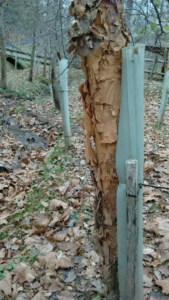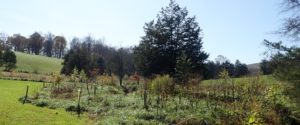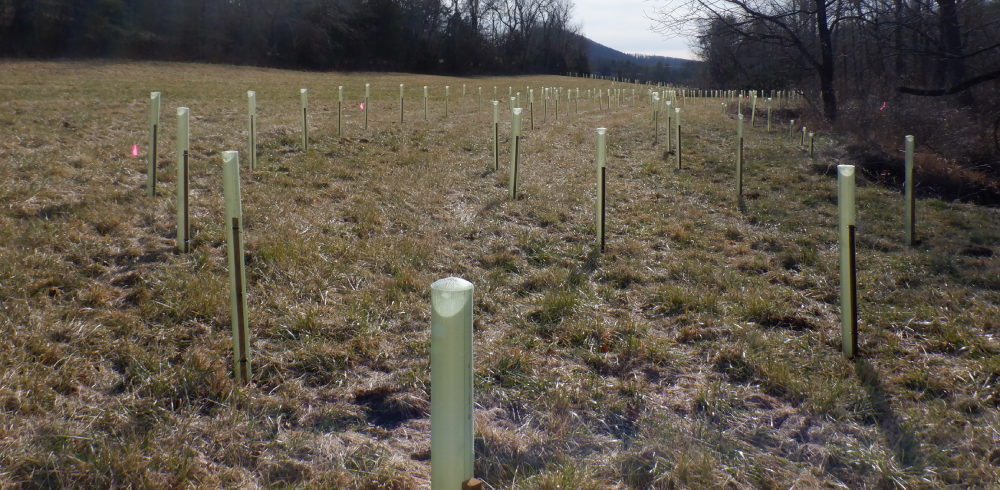Think Little green houses with tiny trees growing inside!

The shelters are designed with a perforated edge that breaks when the tree is ready for its tube to be removed.
These shelters are protecting newly planted baby saplings and will give them a chance to start their journey of growth without the pressure of deer eating them from the top and voles eating them from the bottom. This is just the start and in most cases we are transitioning from a highly managed land-use such as a lawn, hayfield, pasture or cropland that has been mowed, harvested and grazed up to the edge with a clean or monoculture appearance.
It takes time to transition back to a forest.
Within the first 1-3 growing seasons typically the seedling will reach toward the sun and out of the tube and this is a very exciting time to see, because the tubes breathe life! Depending on the species they all grow at their own pace. Poplar, sycamore and river birch grow quickly while oaks and black walnut take more time.
 You will also start to see volunteer native herbaceous grasses, forbs, shrubs and trees start to pop up in between the shelters creating a more naturalized landscape. Messy and textured is good in nature and indicates a diverse environmentally friendly habitat.
You will also start to see volunteer native herbaceous grasses, forbs, shrubs and trees start to pop up in between the shelters creating a more naturalized landscape. Messy and textured is good in nature and indicates a diverse environmentally friendly habitat.
Patience is key when growing a stream-side forest. You can feel good about having a protective filter between upland active land and your waterway and this journey many times starts with a sea of tubes!

